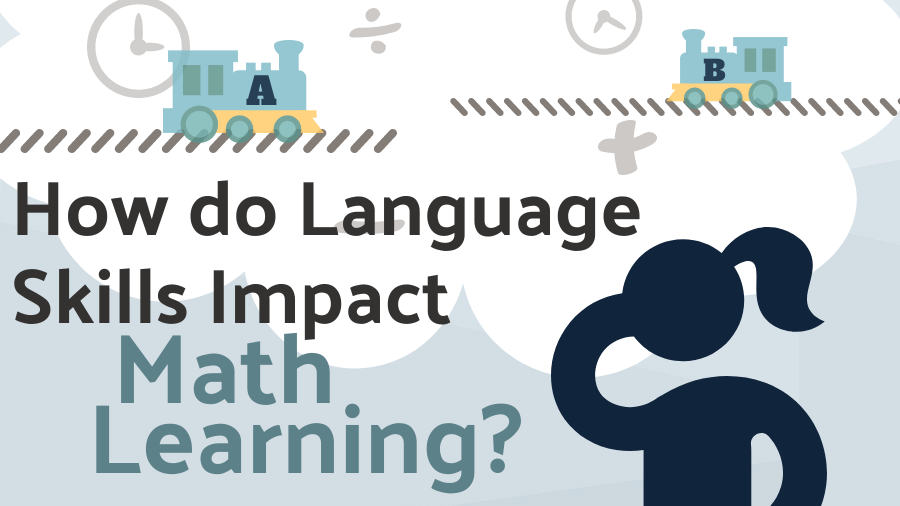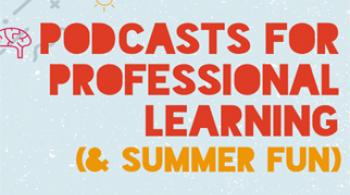By Lisa Beth Carey and Lisa A. Jacobson, PhD
January 23, 2020
As teachers, when we think of math skills, we often think of the ability to count, perform basic operations (addition, subtraction, multiplication, division), understand fractions and ratios, and use algebraic and geometric thinking. Among those who research math learning, these skills are referred to as domain-specific skills, meaning they are the skills that are specific to mathematics and are rarely used for non-mathematic tasks. Unsurprisingly, domain-specific math skills are very important for mathematics achievement. Classrooms around the globe directly teach these skills during mathematics instructional time. We have students learn and practice math facts, and engage in problem solving activities. But, there are several other sets of skills required for students to perform well with math tasks, skills that we may not initially consider to be important for math success.

Domain-general skills can be thought of as the support system for a student’s math skills. While not specific to math, domain general skills help students learn and perform math skills. These skills include attentional control, executive function, memory, language and processing speed (or fluency). We have discussed the impact of attention and executive function on math ability in previous blog posts and we’ll address memory and processing speed in the future. As advertised, this post will focus on the specific role of language skills for supporting math learning.
Early Math Learning and Language
Children do not start learning math when they are first taught about numbers. Rather, math learning starts with concepts of quantity, size and comparisons, and the words that represent numbers. Math learning starts with counting physical objects with caretakers, understanding concepts of less and more or full and empty by playing with food or toys, and general ideas of mass with bigger and smaller (Mazzocco & Thompson, 2005). None of these math skills require numerals. They do, however, require language (for clarification, this language does not need to be spoken, various sign languages are included in this learning process). A child being asked if they would like “more snack” or a caregiver counting a young child’s fingers or toes, starts to teach children about quantity and the order of numerals before they are ever taught to recognize numbers. Thus, the beginning of math learning is based on creating a connection between language and physical objects.
As children get older, language supports their ability to learn to identify and understand the symbolic nature of numerals. For example, a caregiver or teacher will point at the number 1, use its name, and show one object or image. Children then learn to identify the numeral 1 as the symbol that represents one object. Language continues to help students move from concrete math skills based in physical objects toward a more symbolic math ability focused on numerals (Kolkman, Kroesbergen, & Leseman, 2013).
Word Problems and Language
As students get older, they are presented with what are often referred to as “word problems.” These are math problems placed within the context of a written scenario. While the connection between reading difficulties and completing math word problems can be clear, it is important to consider how language plays a role in understanding these types of math activities.
Connections between language and symbolic representations of numerals and math operations is key in understanding a word problem. Often, one of the biggest challenges for students is that of understanding what operation or operations (i.e. addition, subtraction, multiplication and division) are represented by the language of the problem, when they are not explicitly stated. Additionally, having the language skills to identify past, present, future, possession, direction, pronouns and verbs are all necessary within the context of a word problem.
Imagine a student is struggling with the concept of tense in the language they are receiving math instruction. The student is asked to complete the following word problem: “Jack had two apples, he ate one, he plans to buy another tomorrow morning. How many apples will Jack have tomorrow?” If the student isn’t able to make sense of when each action is happening, they will be unable to determine how many apples Jack will have tomorrow.
Likewise, many word problems introduce characters and then revert to pronoun usage, requiring a student to be able to keep continuous tabs on who “he” or “she” or “they” refer to. There are also various ways of discussing the concept of “less than.” “Smaller than,” “fewer than,” and “lower than” can all indicate that one quantity is less than another. Further complicating the matter is the use of the possessive with both nouns and pronouns. Students who struggle with these language concepts may have adequate math calculation skills and still be unable to perform the problem, even if the barrier of reading is removed by having someone else read the problem out loud.
What Should We Do?
Awareness of the role of language in math can help teachers think diagnostically about where a student is getting “stuck” in math. While we tend to focus on the domain specific skills of mathematics, it is important to consider that the aspects tripping a student up might be skills we don’t typically think of as necessary for math learning.
Here are some guiding questions to help you take action if you suspect a student is struggling with math due to their language skills:
- Do I regularly clarify and explain vocabulary and symbols within my instruction?
- Are there resources for students within my learning environment to support student understanding of words and symbols?
- Do I use images and manipulatives to support an understanding of vocabulary and symbols?
- Do I have students in my class who are English Language Learners (ELLs)? (If yes, have I consulted with an ELL specialist?)
- Have I recommended students for a hearing screening when I’ve had concerns about their ability to hear or understand instruction?
- Do I have students in my class who receive special education services for language-based disabilities? (If yes, have I consulted with a special educator about my math instruction?)
Understanding how various cognitive skills fit together to support learning is an important part of creating dynamic instruction that can meet every student’s needs. The more we are able to learn about the science of learning, the better we get at thinking through our instructional and learning environment designs. Stay tuned for future pieces about processing speed and memory! Happy teaching!
References
Kolkman, M. E., Kroesbergen, E. H., & Leseman, P. P. (2013). Early numerical development and the role of non-symbolic and symbolic skills. Learning and instruction, 25, 95-103.
Mazzocco, M. M., & Thompson, R. E. (2005). Kindergarten predictors of math learning disability. Learning Disabilities Research & Practice, 20(3), 142-155.















